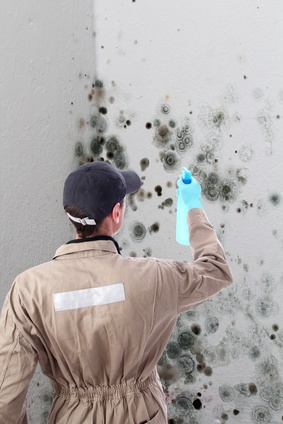Sometimes, it is when we are at home that our health is very much at risk. In addition, it’s not just about faulty appliances or reckless activities, it can be as simple as breathing the air in your own home.
Molds: what they are, and what they can do to you
Molds are a type of fungus that grows in a thread-like form, or has a thread-like set of “roots” that have interconnecting little beads. Being fungus, they are a very simple life form, and most of them are technically harmless, except for one thing: their spores.
Some people are allergic to the spores that molds give off, and in some cases, the allergy can be quite deadly. The spores can also carry toxins that can be harmful to humans, such that the allergic reaction is just the start of a person’s health troubles.
Having mold around can also affect food storage, as food left out in the open even for a short time in a spore-rich environment can be contaminated easily. Again, molds, if eaten, can cause many health problems, not the least of which is those for food poisoning.

Basic detection for molds
You can actually do some basic mold detection yourself, starting with the following steps:
- If none of your family is sensitive to molds, then it may be a good idea to invite a friend who is sensitive to check the house out. If he starts developing an allergic reaction, then you most certainly do have molds.
- Aside from bringing a friend in, many molds have a damp and organic smell – hence the term “moldy.” If you can smell even a faint whiff of this, then it’s time to hunt in earnest. Do check out closet spaces, dark corners, and even the area behind large pieces of furniture or appliances. If you can, try to feel which area of the house is the most humid, and chances are, you just might find your main infestation of mold in that area.
- If you have a basement or attic, do check these spaces thoroughly, given the penchant for moisture to be trapped either in the ceiling or attic area, or the basement and crawlspaces of the house. As long as water can pool in these areas, you have a strong case for a mold infestation.
Once you’ve determined that there is probably a mold infestation on your house, you can then call in mold inspectors to check your house out properly.
Who needs to check for molds?
If you’re in Chicago, mold inspection is something that everyone in the Windy City needs to do, from tenants and landlords, to home sellers and buyers, from real estate agents to homeowners themselves.
The reason for this is that mold infestations are serious business – if your mold infestation is adjudged irremovable, then the local government and health departments can have your house marked as unlivable – practically marking it for destruction. It’s a big hit, financially. Worse, the house may be salvageable, but the cost of the cleanup may as well make it better off to be torn down. Regular mold checks can prevent this from happening, and can even strengthen your house against mold outbreaks.
What mold inspectors look out for
Mold inspectors check out the following areas of the house, as these could be places where mold can begin:
Roofing – Inspectors will check out your attic, ceiling, roof, and gutter areas. Any possible roof leaks and other issues due to poor maintenance or extreme weather should be addressed, as these can create pockets of moisture or even trapped water, from which molds can grow.
Landscaping – Poorly-designed landscaping can cause water to go towards the house, due to the house having a lower plane than the landscaped areas. This can lead to water being around the foundations or walls, and that’s where mold can start. If the foundation or walls are weakened or damage, the moisture and molds can seep through and then find a handhold inside the house.
Foundation – The crawlspace of your house can be a ripe place for molds, if there isn’t enough ventilation, and if the humidity becomes particularly high in that area. The weak points, in this case, would be the support struts and main foundations structures that are in contact with the soil. This, combined with the lack of sunlight, makes this area a near-perfect place for mold to grow.
Plumbing and fixtures: When you’re dealing with plumbing, the first things that will be looked at are joints, and the possibility of cracked piping. This is particularly true for places like Chicago, where you can have a rather wide temperature range across the year, and this can cause issues with your plumbing. Any area with leaks can become breeding grounds for mold. On the other hand, fixtures with improper caulking can also be an issue within the house, such as faucets, kitchen sinks, bathtubs, and even showers. The mold may not be obvious, but looking at the undersides of such areas might reveal mold infestations.
Gardens – If you have a house with a garden, or a building with a back yard that has a tree or some soil, then the part of the structure facing that can be vulnerable to molds, given the moisture and shade from the sun that plants give. Water sprinklers and garden hoses can also bring water to areas around the structure where mold growth can be triggered, due to constant wetness.
Do remember, Chicago mold inspection companies and their teams are your best bet when it comes to making sure you’re not going to be driven out of your home by mold colonies.